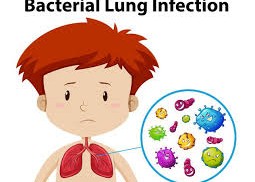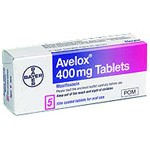Understanding Bacterial Infections of the Respiratory System


What are bacterial infections of the respiratory tract?
Have you ever wondered why sometimes a simple cough becomes more serious and lingers?
One of the main reasons is a bacterial infection of the respiratory tract. Unlike viral colds that often improve on their own, bacterial infections can cause stronger symptoms and may need proper medical treatment.
- Bacterial infections affect the lungs, throat, or airways
- They can happen after a person first has a viral illness
- Symptoms are often more severe than those from a simple cold
- Common examples include pneumonia, bronchitis, and sinus infection
These infections can affect people of all ages and may become dangerous if untreated.
When bacteria invade the respiratory system, they can trigger inflammation and damage the tissues. This makes it harder for the body to fight back without help.
Common signs of bacterial respiratory infections
How can someone tell if their illness is caused by bacteria and not a virus?
Certain warning signs often point to a bacterial cause.
- High fever that does not go down easily
- Thick yellow or green mucus from coughing or nasal passages
- Shortness of breath or chest pain while breathing
- Symptoms that worsen after seeming to improve
- Severe fatigue or weakness
These symptoms can disrupt daily life and may point to a more serious health problem. Paying attention to these signs helps people seek help earlier and prevent the infection from spreading or worsening.
Why do bacterial infections of the respiratory tract happen?
Many people ask why these infections develop in the first place. The truth is that several everyday factors can make someone more likely to get them.
- Weakened immune system due to stress or poor nutrition
- Exposure to crowded environments or polluted air
- Having another illness that lowers the body’s defenses
- Smoking or long-term breathing difficulties
- Seasonal changes and cold weather
These conditions make it easier for bacteria to enter and grow inside the body. When the body cannot clear bacteria on its own, infections start to take hold and lead to stronger symptoms.
Who is at higher risk?
Not everyone faces the same chance of getting sick. Some groups of people are more likely to develop bacterial respiratory infections.
- Children, because their immune system is still developing
- Older adults, due to weaker natural defenses
- People with long-term lung problems
- Those with weakened immune systems from other conditions
- Individuals exposed to smoke or chemical irritants
Recognizing who is more at risk allows doctors to provide faster support and closer monitoring. For these groups, even a mild infection may quickly become more serious.
How are bacterial respiratory infections diagnosed?
How can doctors be sure someone has a bacterial infection in the respiratory tract?
The process often includes several steps.
- Careful review of symptoms and patient history
- Listening to breathing with a stethoscope
- Imaging tests such as a chest scan or X-ray
- Laboratory tests to check for bacteria in mucus samples
- Blood tests in some cases
These methods help confirm if bacteria are causing the illness and guide the right treatment. Accurate diagnosis is key to making sure the patient gets the most effective care.
Can bacterial respiratory infections be prevented?
Is it possible to avoid these infections altogether?
While it is not always possible, there are steps that reduce the risk.
- Washing hands regularly and practicing good hygiene
- Avoiding smoking and secondhand smoke
- Eating a healthy diet with enough vitamins
- Staying active to strengthen the immune system
- Getting vaccinated against certain illnesses that can lead to bacterial infections
Prevention does not remove all risk, but it lowers the chance of serious illness and supports long-term health. By focusing on prevention, many respiratory infections can be reduced or made less severe.
Treating bacterial infections with medical support
When infections do not improve naturally, medical care becomes important. Doctors may suggest different approaches, including advanced medicines such as Avelox (Moxifloxacin).
- Treatment focuses on reducing bacteria in the body
- Medicines like Avelox may be used for stronger infections
- Rest and hydration are also important for recovery
- Patients are often monitored to check if symptoms are improving
- Follow-up may be needed to prevent recurrence
Medical support helps restore breathing comfort and lowers the risk of complications. Using the right treatment makes recovery faster and more reliable.
Role of Avelox (Moxifloxacin) in recovery
Sometimes standard treatments are not enough, especially in more severe infections. In such cases, doctors may prescribe Avelox (Moxifloxacin). It is considered when other treatments may not work as well
- Helps target stubborn bacteria in the respiratory tract
- Often used for patients with stronger or lasting infections
- Works by stopping bacteria from growing and spreading
- Allows the body to heal while easing symptoms
Avelox is often a valuable option for those facing tough bacterial respiratory infections. It gives patients a stronger chance of full recovery when guided by medical advice.
Final thoughts
Bacterial infections of the respiratory tract can turn a simple cough or sore throat into a more serious problem. By understanding the symptoms, risks, and ways to prevent them, people can protect their health more effectively. Medical care, especially with the right treatment, is often necessary to make recovery smooth and safe.
Drug Description Sources:
U.S. National Library of Medicine, Drugs.com, WebMD, Mayo Clinic, RxList
Reviewed and Referenced By:
- Dr. Alan Carter, PharmD
Clinical pharmacist with expertise in drug safety and chronic illness treatments, often cited on Drugs.com for reviewing medicine information.
- Dr. Emily Johnson, MD
Pediatric specialist contributing to WebMD with a focus on childhood illnesses and treatments.
- Dr. Michael Rivera, PharmD
Expert in antibiotic therapy, frequently referenced on RxList for guidance on safe medication use.
- Dr. Sarah Thompson, MD
Internal medicine doctor, contributor to Mayo Clinic educational articles on respiratory health.
- Dr. James Miller, PhD – Researcher associated with the U.S. National Library of Medicine, focusing on infectious diseases and patient education.
Article Post: Editorial Team of RXShop.md
(Updated at Sep 7 / 2025)

